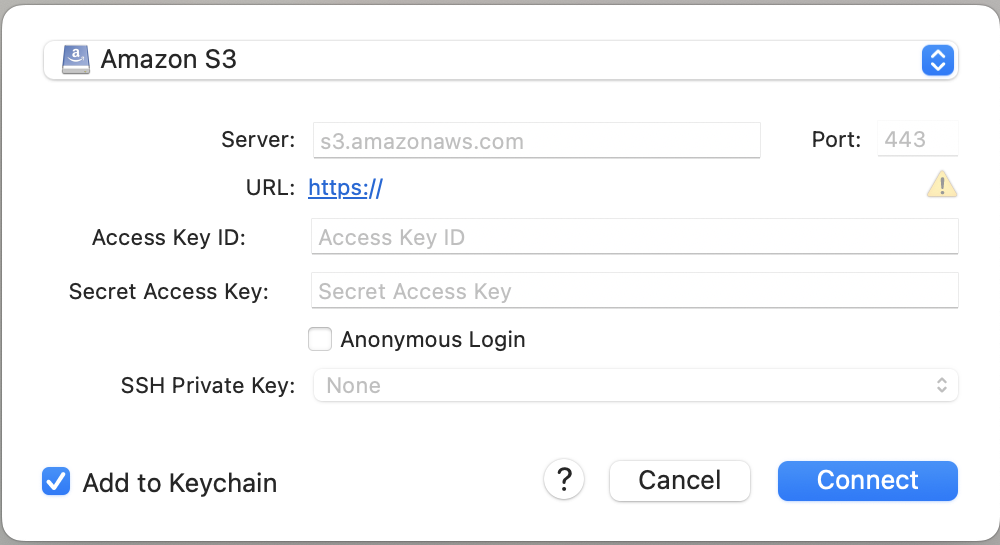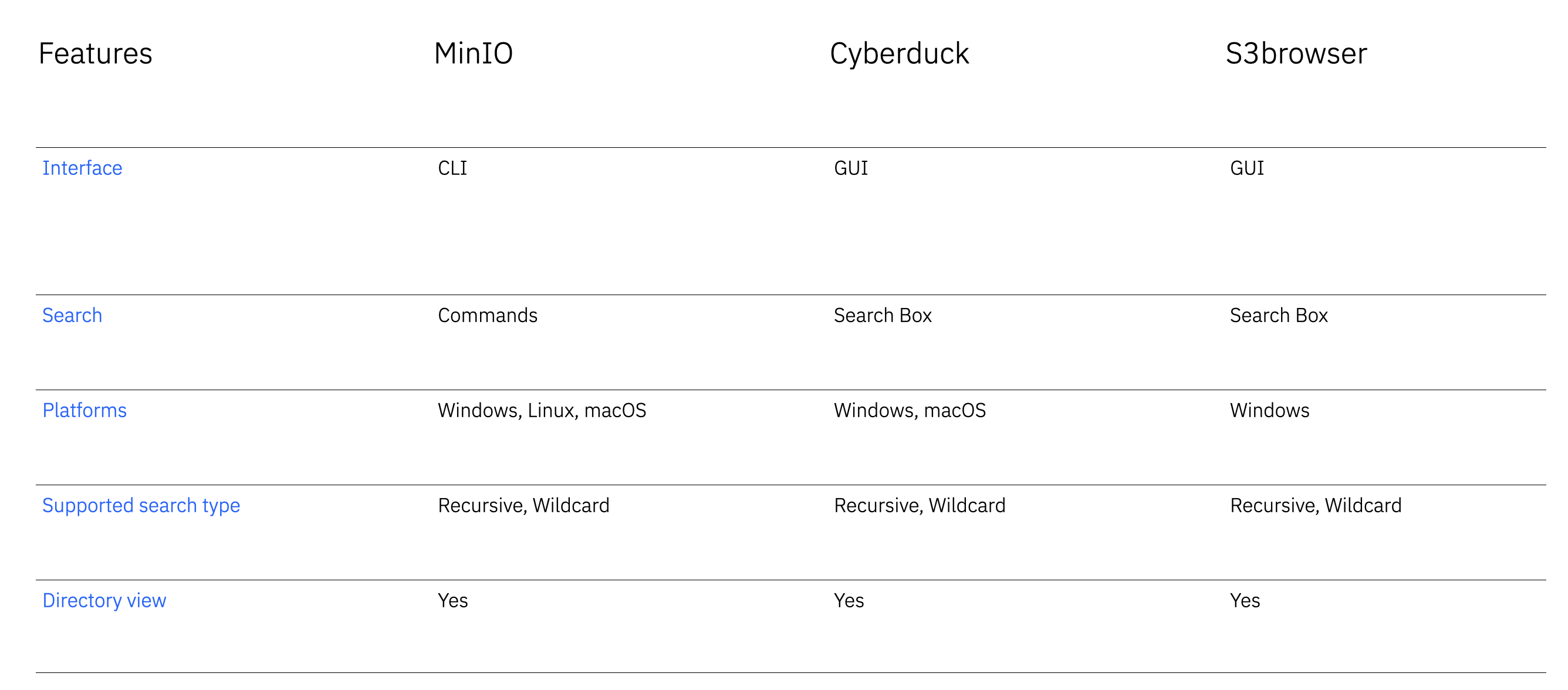Top Tools for Object Storage and Data Management
The best tools for object storage, including MinIO, Cyberduck, and more, to efficiently manage and store unstructured data in modern cloud environments.
Join the DZone community and get the full member experience.
Join For FreeWhether you are a seasoned cloud architect or a newbie getting to understand the nuances of the cloud, at some point, you will come across an interesting storage option called object storage to store or archive your unstructured data. In this article, you will be introduced to object storage and key tools like MinIO, Cyberduck, and more.
Understanding Object Storage
Object storage is a data storage architecture that manages information as discrete units called objects, rather than as files in folders or blocks on servers. Each object typically includes the data itself, a variable amount of metadata, and a globally unique identifier. This approach offers several advantages over traditional storage methods, particularly when dealing with large volumes of unstructured data.
Key Features of Object Storage
- Scalability: Object storage systems can scale to petabytes and beyond with ease, making them ideal for businesses with rapidly growing data needs.
- Durability: Through techniques like erasure coding and data replication, object storage ensures high data durability and availability.
- Cost-effectiveness: By eliminating the need for expensive, specialized hardware, object storage can significantly reduce storage costs.
- Metadata richness: The ability to associate extensive metadata with each object enhances searchability and data management capabilities.
- API-driven access: RESTful APIs make it easy to integrate object storage with various applications and services.
Tools and Technologies for Object Storage
Several tools and technologies have emerged to support and enhance object storage systems. Let's explore some of the most prominent ones:
MinIO
MinIO is an open-source, high-performance object storage system designed for cloud-native applications. It provides a scalable and efficient solution for storing and retrieving large amounts of unstructured data, such as documents, images, and videos. MinIO is compatible with the Amazon S3 API, making it a popular choice for organizations looking to implement on-premises or hybrid cloud storage solutions.
Key Features of MinIO
MinIO offers several notable features that make it a powerful object storage solution:
- S3 compatibility: MinIO fully supports the Amazon S3 API, allowing seamless integration with existing S3-compatible tools and applications.
- High performance: Optimized for modern hardware, MinIO delivers low-latency and high-throughput data access.
- Scalability: MinIO can be deployed in a distributed mode, enabling horizontal scaling across multiple nodes.
- Data protection: It implements erasure coding to protect against data loss and ensure high availability.
- Security: MinIO provides encryption for data at rest and in transit, along with identity management features.
- Event notifications: Supports configurable actions or triggers for specific events like object creation or deletion.
- Lifecycle management: Allows defining rules to manage object lifecycles, including automatic transitions between storage tiers.
MinIO Client (mc)
MinIO provides a powerful command-line interface called MinIO Client (mc) that allows users to interact with MinIO servers and other S3-compatible storage services. This CLI offers a modern alternative to traditional UNIX commands for managing object storage.
Key Features of MinIO Client
- Cross-platform support: mc works on various operating systems, including Windows, macOS, and Linux.
- S3 compatibility: It can interact with any S3-compatible storage service, not just MinIO servers.
- Familiar syntax: mc commands are designed to be similar to common UNIX commands, making them intuitive for many users.
- Rich functionality: Offers a wide range of commands for managing buckets, objects, and server configurations.
Essential mc Commands
mc alias: Manage server credentials and configurations.mc ls: List buckets and objects, similar to the UNIX ls command.mc mb: Make a new bucket.mc cp: Copy objects between local filesystem and object storage or between object storage services.mc mv: Move objects within or between storage locations.mc rm: Remove objects or buckets.mc mirror: Synchronize objects between different locations.mc find: Search for objects based on various criteria.mc diff: Compare objects between two locations.mc cat: Display object contents.
Using MinIO Client
To use mc, you first need to set up an alias for your MinIO server:
mc alias set myminio https://s3.<REGION>.<ENDPOINT> <YOUR-ACCESS-KEY> <YOUR-SECRET-KEY>After setting up the alias, you can perform various operations. For example:
List buckets:
mc ls myminioCreate a new bucket:
mc mb myminio/newbucketCopy a file to MinIO:
mc cp myfile.txt myminio/newbucket/
Download an object from MinIO:
mc cp myminio/newbucket/myfile.txt ./Advanced Search
Match directory names matching wildcard patterns:
mc find myminio/newbucket --path "*logs*" List recursively:
mc ls --recursive myminio/newbucket
mc ls --summarize myminio/newbucketMinIO Client provides a comprehensive set of commands for managing your object storage, making it a powerful tool for administrators and developers working with MinIO or other S3-compatible storage systems. Its intuitive syntax and rich feature set make it an essential component in the MinIO ecosystem, enabling efficient management and interaction with object storage resources.
Cyberduck
Cyberduck is a libre FTP, SFTP, WebDAV, S3, and OpenStack Swift browser for Mac and Windows. While not an object storage system itself, it's a valuable tool for interacting with object storage services. Features include:
- User-friendly interface for managing files and buckets
- Support for multiple cloud storage providers
- Ability to edit files directly in external editors
- Synchronization of local and remote files
- Integration with system keychain for secure credential storage

Key Features for S3 Integration
- Easy connection setup: Users can create S3 connections by selecting the Amazon S3 protocol and providing their Access Key ID and Secret Access Key.
- Bucket management: Cyberduck allows creating, deleting, and managing S3 buckets directly through its interface.
- File operations: Users can upload, download, and manage files within S3 buckets using drag-and-drop functionality.
- Security options: Cyberduck supports server-side encryption in S3, including options for AWS Key Management Service (KMS).
- Versioning support: The application enables the management of S3 bucket versions, allowing users to preserve, retrieve, and restore different object versions.
- Advanced search: Supports wildcard pattern search with
*or?. Here's an example, as mentioned in the Cyberduck documentation.
|
Wildcard |
Description |
Example |
Matches |
|---|---|---|---|
|
|
matches any number of any characters, including none |
Te* |
Test, Tee, or Termin |
|
|
matches any single character |
?bc |
Abc, abc, or lbc |
Comparison Chart and Other Tools
This chart compares the various tools that I use in my day-to-day interactions with Object Storage buckets. There are other tools that I listed below for your reference:

In addition to MinIO, Cyberduck, and S3 Browser, there are several other notable tools in the object storage and file transfer space:
- RaiDrive: A Windows tool that allows users to connect cloud storage services and network drives as local drives, supporting WebDAV, FTP, and SFTP connections.
- Commander One: A dual-pane file manager for macOS with FTP, FTPS, and SFTP support, offering integration with cloud storage accounts.
- FileZilla Pro: A popular FTP client that also supports S3 and other cloud storage protocols.
- LucidLink: Provides a cloud-native file system that can work with S3 and other object storage systems.
- Rclone: An open-source command-line tool for syncing files and directories to and from various cloud storage providers, including S3.
- AWS CLI: The official command-line interface for interacting with AWS services, including S3.
- S3cmd: A command-line tool specifically designed for managing data in Amazon S3.
- CloudBerry Explorer: A file manager designed for Amazon S3 and other cloud storage services.
- CrossFTP Pro: A multi-protocol file transfer client that supports S3 along with other protocols.
- Airfile: Another file transfer client with S3 support.
Conclusion
These tools offer various features for managing object storage, from graphical interfaces to command-line utilities, catering to different user needs and preferences in the cloud storage ecosystem.
Further Reading
Opinions expressed by DZone contributors are their own.

Comments